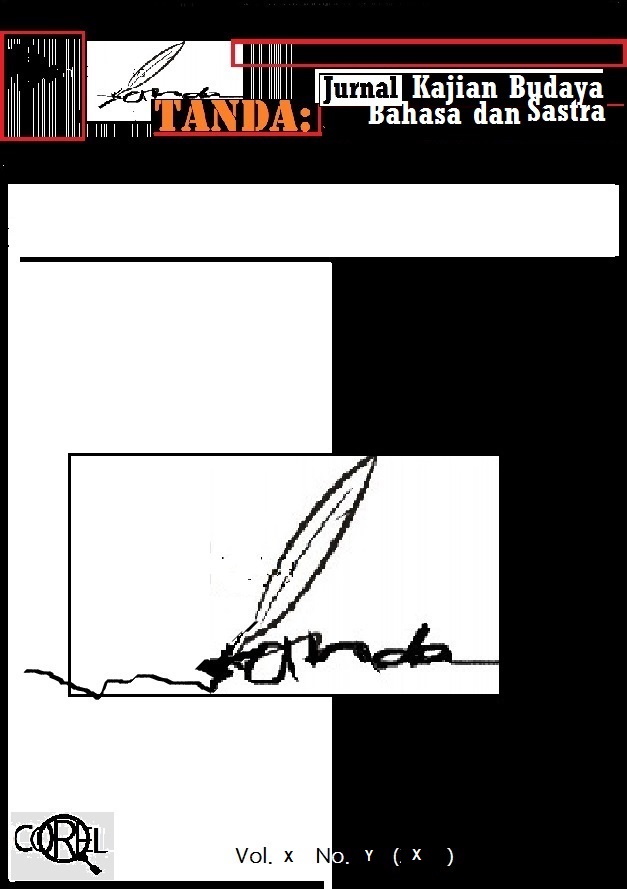IDENTITY TRANSFORMATION IN AUDREY NIFFENEGGER'S THE TIME TRAVELER'S WIFE
DOI:
https://doi.org/10.69957/tanda.v4i06.2023Keywords:
Identity, Dynamic, Emotional, Psychology, RelationshipAbstract
This study explores the importance of identity as a characteristic continuously evolves through social interaction and life experiences. Identity transformation involves significant changes in values, beliefs, social roles, and life goals. These changes are often influenced by internal and external conflicts, trauma, or experiences that comped individuals to adjust their worldviews. In Audrey Niffenegger’s novel The Time Traveler’s Wife, identity transformation becomes a central theme, particularly in the characters of Clare Abshire and Henry DeTamble. The study employs Hernan Turner’s relational identity theory, Erik Erikson’s personality psychology theory, and Henri Tajfel’s social identity theory. to analyze the dynamics of the main characters’ identity transformations. Identity is understood as a dynamic process shaped through interpersonal relationships, social membership, and psychological and environmental factors. A qualitative descriptive approach strengthened by psychological literary analysis is used to explore the narrative elements of the novel. The study finds that emotional relationships and psychological challenges arising from the uncertainty of time significantly influence the characters’ values, beliefs, and social roles, while also demonstrating how they cope with internal and external conflicts. The study concludes that the emotional relationships and psychological challenges faced by Clare Abshire and Henry DeTamble in dealing with the uncertainty of time have a significant impact on changes in their values, beliefs, relationships, and social roles. These changes not only affect their understanding of themselves but also illustrate how they overcome internal and external conflicts to achieve a sense of identity wholeness. By exploring these dynamics, the study offers a different perspective on identity formation within complex and ever-evolving relationships.
References
Carroll, J. (2004). Literary Darwinism: Evolution, human nature, and literature. Routledge. https:/doi.org/10.4324/9780203505274
Erikson, E. H. (1963). Childhood and society (Vol. 2). Norton New York. https://doi.org/10.30965/9783657768387_048
Erikson, E. (1959). Theory of identity development. E. Erikson, Identity and the Life Cycle. Nueva York: International Universities Press. Obtenido de Http://Childdevpsychology. Yolasite. Com/Resources/Theory% 20of% 20ident Ity% 20erikson. Pdf.
Fujita, M., Harrigan, P., & Soutar, G. N. (2018). Capturing and co-creating student experiences in social media: A social identity theory perspective. Journal of Marketing Theory and Practice, 26(1–2), 55–71.
Hermann-Turner, K. M. (2020). Integrating relational-cultural therapy into counseling practice. Counseling the Contemporary Woman: Strategies Interventions across the Lifespan, 31.
Hogg, M. A. (2016). Social Identity Theory. In S. McKeown, R. Haji, & N. Ferguson (Eds.), Understanding Peace and Conflict Through Social Identity Theory: Contemporary Global Perspectives (pp. 3–17). Springer International Publishing. https://doi.org/10.1007/978-3-319-29869-6_1
Merriam, S. B., & Tisdell, E. J. (2015). Qualitative research: A guide to design and implementation. John Wiley & Sons.
Strauss, A. (2013). Transformations of identity. In Human behavior and social processes (pp. 63–85). Routledge. https://doi.org/10.4324/9781315008196
Swann Jr, W. B., & Bosson, J. K. (2010). Self and identity. Handbook of Social Psychology.
Downloads
Published
How to Cite
Issue
Section
License
Copyright (c) 2024 Sephatama Buana Perkasa Ganinda; Yoseph Bavo Agung Prasaja

This work is licensed under a Creative Commons Attribution-ShareAlike 4.0 International License.
Authors publishing in TANDA: Jurnal Kajian Budaya, Bahasa dan Sastra e-ISSN 2797-0477 will be asked to sign a Copyright Determination Form. In signing the form, it is assumed that the author has obtained permission to use copyrighted or previously published material. All authors must read and agree to the terms outlined in the form, and must sign the form or agree that the corresponding author can sign on their behalf. The article cannot be published until the signed form has been received. It is a condition of publication that authors grant copyright or license the publication rights in their article, including the abstract, to jurnaltanda@gmail.com. This allows us to ensure full copyright protection and to disseminate the article, and of course the Journal to the widest possible readership in both print and electronic formats.













